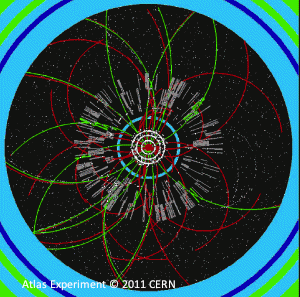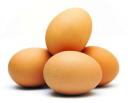¿Pintas, escribes, bailas, cantas, o esculpes? ¿Eres un artista inspirado por la ciencia? El CERN puede ser el lugar para ti.
La ciencia que se hace en este laboratorio ha sido por mucho tiempo una inspiración para los artistas. Una artista actual que podrías conocer es Kate McAlpine, también conocida como la artista de rap Alpinekat. Ella ascendió a la fama con su éxito Large Hadron Rap que describe el LHC (Gran Colisionador de Hadrones) y la ciencia relacionada a CERN. Mira el video y otros aquí.
CERN, el acrónimo francés de la Organización Europea para la Investigación Nuclear, es un laboratorio de física de alta energía ubicado en su mayor parte en Suiza. Es aquí donde el acelerador más grande del mundo, el LHC, es situado. Cruza la frontera Suiza-Francés 100 m, más o menos, bajo tierra. Este instrumento es esencialmente un círculo, con un diámetro de 9 km, que consiste en una serie de imanes superconductores. Los imanes sirven para acelerar partículas que se hacen chocar en uno de numerosos detectores, cada uno grande como una casa. El resultado es una visualización espectacular de líneas de colores vivos que se parecen a algo así:
Es fácil ver por qué aquí la ciencia puede inspirar a los artistas.
Basta ver la película Ángeles y demonios. Dan Brown fue inspirado por la ciencia del laboratorio cuando escribió su libro. En éste, los malos roban una lata de antimateria de un laboratorio subterráneo secreto a CERN, y porciones de la película fueron filmadas al experimento ATLAS al CERN (haz clic en la sección Multimedia de la página web).
Cada vez con mayor interés se mezclar el arte y la ciencia, ahora un nuevo experimento se realiza al CERN. Se llama Great Arts for Great Science (Grandes Artes para Grande Ciencia); la meta es atraer a los artistas al laboratorio donde pueden dialogar con científicos y, gracias al arte, llevar a la ciencia a un marco de cultura más amplio. Y es verdaderamente más amplio; la galería del sitio web muestra ejemplos de la escultura, la música, la fotografía, y la baila. La organizadora del proyecto es Ariane Koek, una especialista de cultura que se dedica al crecimiento del arte al CERN. Como parte de esta iniciativa, un programa de residencia al laboratorio para artistas debe comenzar este año, que punta a mejorar el paso de información entre los artistas y los científicos. Los artistas tendrán la oportunidad de visitar el laboratorio y hablar con los científicos, y reforzar sus obras artísticas con el conocimiento científico.
¿Pero no piensas que esta inspiración va sólo del científico al artista? Algo sorprendente es que el intercambio de cultura sucede en las dos direcciones. Los grandes científicos suelen utilizar el pensamiento creativo para resolver un problema particularmente difícil. Piensa a Leonardo da Vinci. Durante el Renacimiento, no habían divisiones fuertes entre el arte y la ciencia como hoy. A pesar de su trabajo como artista, da Vinci utilizaba su creatividad para proyectar diferentes tipos de barricadas, puentes y máquinas que volaban. O considera los nombres de los satélites que orbitan alrededor del planeta Urano. Los astrónomos fueron inspirados por los nombres de los personajes de las obras de William Shakespeare y Alexander Pope. Atrayendo a los artistas al CERN, los científicos tendrán la oportunidad de acceder a sus lados artísticos y podrán pensar más creativamente sobre sus proyectos y la ciencia en general.
Como dice el consejero científico para la Great Arts for Great Science, Michael Doser, La ciencia puede dar entendimiento, mientras que el arte puede dar significado a la experiencia humana.
Superando las diferencias entre el arte y la ciencia, podemos ver más fácilmente la relevancia de las investigaciones básicas en la sociedad y permitir a la ciencia dedicarse a un contexto más amplio de cultura. Hay una relación estrecha entre el arte y la ciencia en la cual ambos son maneras de explorar nuestra existencia: el significado de ser humano y donde estamos en el universo.

